Featured Articles
Danny Garcia Ready For His Close-Up, Mr. DeMille
 Hall of Fame manager Shelly Finkel might have backed away from boxing, but that doesn’t mean he’s turned his back on boxers, and especially not those whose careers he most recently oversaw. Finkel, who began his own career as a promoter of such renowned musical acts as the Rolling Stones, Bob Dylan, Billy Joel, Elton John, Paul McCartney, Jimi Hendrix, the Grateful Dead and Janis Joplin, made the crossover to boxing in 1977 and went on to manage or advise the likes of Evander Holyfield, Pernell Whitaker, Meldrick Taylor, Mark Breland, Mike Tyson, Michael Moorer, Fernando Vargas and Mike McCallum.
Hall of Fame manager Shelly Finkel might have backed away from boxing, but that doesn’t mean he’s turned his back on boxers, and especially not those whose careers he most recently oversaw. Finkel, who began his own career as a promoter of such renowned musical acts as the Rolling Stones, Bob Dylan, Billy Joel, Elton John, Paul McCartney, Jimi Hendrix, the Grateful Dead and Janis Joplin, made the crossover to boxing in 1977 and went on to manage or advise the likes of Evander Holyfield, Pernell Whitaker, Meldrick Taylor, Mark Breland, Mike Tyson, Michael Moorer, Fernando Vargas and Mike McCallum.
Since July 2010 Finkel, 67, has been chief executive officer of Empire Sports and Entertainment, which primarily deals with the music industry. Maybe it really is true that what goes around eventually must come around.
“I still love boxing, but more and more the politics of it I don’t like,” Finkel said of his decision to return to another business where the hits, as well as the misses, just keep a’coming. “Managing boxers wasn’t as much fun as it used to be.”
Which is not to say that Finkel does not retain a warm, fuzzy spot in his heart for many of the 20 or so fighters whose contracts he was obliged to divest himself of, including Victor Ortiz, Deontay Wilder, Roberto Guerrero and Vanes Martirosyan. But few held more personal appeal to Finkel than Philadelphia-based junior welterweight Danny “Swift” Garcia, who challenges WBC super lightweight champion Erik “El Terrible” Morales on Saturday night in Houston’s Reliant Center. To Finkel’s way of thinking, Garcia possesses all the qualities – both personal and professional – that can lead to superstardom.
HBO will televise the scheduled 12-round bout, Garcia’s debut as a main-eventer for the pay-cable giant.
“Danny was a very, very good amateur who won most of the titles,” Finkel said. “He could punch big and he’s a good-looking kid. I think all of that is showing now. He’s just coming into his own.”
Morales (52-7, 36 KOs), of course, also had all that going for him once. But, at 35, the Tijuana native has lots and lots of miles on his pugilistic odometer, maybe even more than 47-year-old Bernard Hopkins, the enduring classic who is still is the WBC light-heavyweight champion at an age when most fighters have long since been consigned to the junkyard. And if Garcia (22-0, 14 KOs), who celebrated his 24th birthday yesterday, is only now approaching peak efficiency, the question about Morales that begs to be answered is whether he is finally saying goodbye to his long run as a big-time performer.
Finkel has long observed the ceaseless struggle between old acts on the way out and new ones on the way in, both in concert halls and boxing arenas, so he has a pretty good idea of how this particular conflict of experience vs. youth will play out. Or maybe he just wants to believe in the hot kid whose star he still would have his wagon hitched to, had not another opportunity presented itself.
“His first couple of pro fights, even though he was scoring knockouts, he was still tentative,” Finkel said of Garcia. “Now he’s feeling comfortable. I think the last fight, (a split decision over former world champion Kendall Holt that didn’t appear to be that close), when he got nailed with a good shot and shook it off, raised Danny to the next level.
“I think Danny is the best prospect to come out of Philly in the last 20-plus years, since Meldrick Taylor. I just think he’s ready for Morales. Danny has the power to keep pushing Erik back. He just has to fight smart and not be overly impressed that, hey, `I’m in here with Erik Moarles’ If he looks at Erik as just another fighter he has to beat, and not some sort of legendary figure, Danny will win. I don’t doubt that at all.”
That feeling of absolute confidence also runs deep in Angel Garcia, who has trained his son since he was 10 and expects to profitably remain on the job for a good while longer. Morales may well be headed to induction into the International Boxing Hall of Fame some day, but that Morales is as long gone as Holyfield’s hair or Tyson’s six-pack abs.
“We’re not underestimating Morales, who was and still is a good fighter, but there’s no way at all I can see him beating Danny,” the elder Garcia said. “Ten years ago, Morales was very dangerous. Now? He’s just someone else in Danny’s way. He’s got the title, but (the powers-that-be) wanted him to get it. It was politics.”
That is a not-so-subtle dig at the Mexico City-based WBC, whose rulings often seem to favor Mexican fighters. But while Angel Garcia declined for his son to take on Morales somewhere in Mexico, he is sure what is about to go down will be conclusive enough that it can survive any potential heist by pencil.
“Knockout, decision, it don’t matter,” Angel said. “Danny will win big enough that everybody is going to know who the new champ is and deserves to be. Now is the time for Danny to explode and put his name out there. He’s going to be the first Latino (Garcia is of Puerto Rican descent) champion from Philadelphia.”
Morales, it should be noted, was truly a wondrous champion, and a leading pound-for-pound guy on his way to winning the first three of his four titles in different weight classes. He won his first bejeweled belt at 21, in 1997, on an 11th-round knockout of Daniel Zaragoza. That watershed victory – there would be many others — boosted his record to 27-0, with 21 wins inside the distance.
He won the opener of his three memorable showdowns with Marco Antonio Barrera, and was 47-0 when he finally lost, in his second matchup with Barrera on Nov. 27, 2004. At that point, Morales could have retired and started the clock ticking on a first-ballot selection to the IBHOF. And if not then, his points nod over Manny Pacquiao on March 19, 2005, might have been a good time to step away and enjoy the rest of his life. That outcome – Pacquiao’s only defeat in the United States – does not seem now, in retrospect, to be such an upset.
But fighters on top always believe they’re going to stay there forever, and the wear and tear that all legends show on their way there started to become evident. From Sept. 10, 2005, to Aug. 4, 2007, Morales lost four in a row, to Zahir Raheem, to Pacquiao twice and to David Diaz, sending him into a 31-month retirement.
The Morales that returned to the ring in 2010 is clearly a diminished version of his former self, but not an empty shell, either. He is not the risk-taker he once was, sacrificing some aggression for restraint, the better to check further erosion of his physical gifts. It is a telltale concession to age and all the punishment his body has absorbed, but the wise fighter learns to time his retreats as well as his attacks, and Morales, if nothing else, remains an intuitive counterpuncher capable of exploiting an opponent’s mistakes.
Youth is not always served in boxing, and it might not be on Saturday. But whether a new star rises in the sky or an old one vanishes from view, the journey to discovery should be interesting.
-

 Featured Articles3 weeks ago
Featured Articles3 weeks agoAvila Perspective, Chap. 330: Matchroom in New York plus the Latest on Canelo-Crawford
-
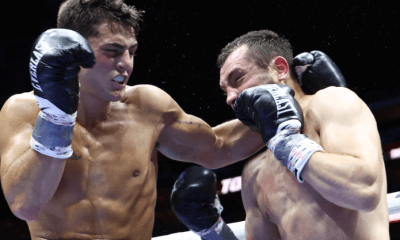
 Featured Articles2 weeks ago
Featured Articles2 weeks agoVito Mielnicki Jr Whitewashes Kamil Gardzielik Before the Home Folks in Newark
-
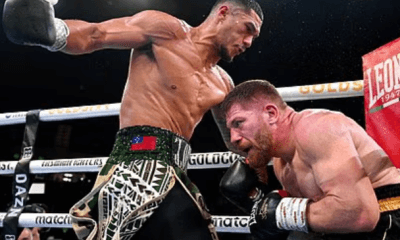
 Featured Articles4 weeks ago
Featured Articles4 weeks agoOpetaia and Nakatani Crush Overmatched Foes, Capping Off a Wild Boxing Weekend
-
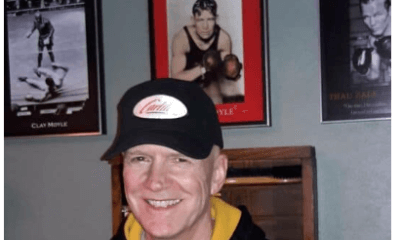
 Featured Articles3 weeks ago
Featured Articles3 weeks agoCatching Up with Clay Moyle Who Talks About His Massive Collection of Boxing Books
-

 Featured Articles4 weeks ago
Featured Articles4 weeks agoFabio Wardley Comes from Behind to KO Justis Huni
-
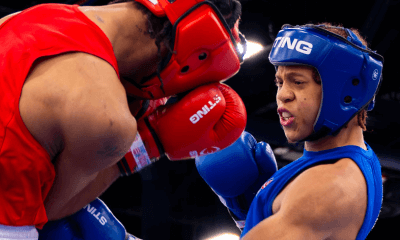
 Featured Articles2 weeks ago
Featured Articles2 weeks agoMore Medals for Hawaii’s Patricio Family at the USA Boxing Summer Festival
-
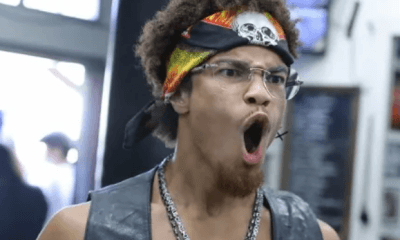
 Featured Articles3 weeks ago
Featured Articles3 weeks agoThe Shafting of Blair “The Flair” Cobbs, a Familiar Thread in the Cruelest Sport
-
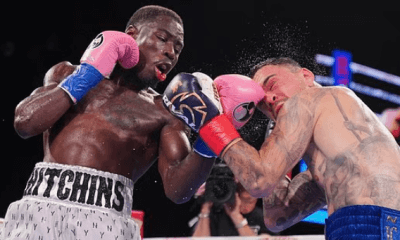
 Featured Articles3 weeks ago
Featured Articles3 weeks agoRichardson Hitchins Batters and Stops George Kambosos at Madison Square Garden
















